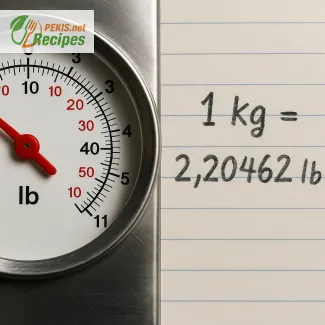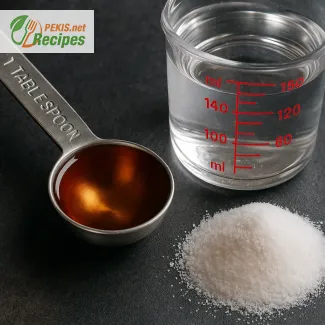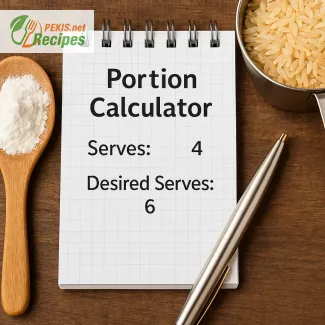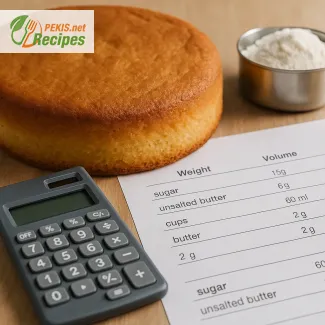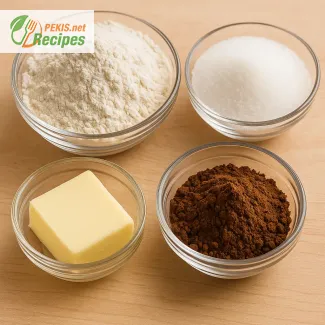
200 grams is not the same for every ingredient because density changes how much fits into a cup. For flour, 200 grams is usually more than one cup, while for sugar the same weight fits into fewer cups. Butter converts more consistently, making substitutions easier. Knowing these variations ensures accurate baking and cooking, whether you’re preparing cakes, bread, or sauces. Pre-measuring portions of 200 grams also helps with storage, freezing, and quick preparation.
Understanding 200 grams to cups in everyday cooking
Practical guide for flour, sugar, butter, and more
When working with recipes from different parts of the world, the challenge often begins with unit conversions. Many American recipes list volumes such as cups, while European and international sources use grams. Knowing how to convert 200 grams to cups for common ingredients like flour, sugar, butter, or cocoa powder can transform a confusing recipe into something approachable and reliable.
Cooking and baking depend on precision, but the density of each ingredient changes how 200 grams fills a cup. Flour is lighter and airy, while sugar is denser and packs differently. Liquids like milk or oil have a consistent density, making conversions more straightforward. Understanding these variations saves time, prevents mistakes, and helps create consistent results whether you are baking cakes, making sauces, or preparing bread dough.
Why this topic matters for every kitchen
- Flour: 200 grams of flour typically equals more than one cup, but sifting, scooping, or packing the flour alters the volume dramatically.
- Granulated sugar: Denser and heavier, sugar gives a smaller cup measurement for the same 200 grams.
- Butter: With a standard water and fat content, butter converts to cups more predictably.
- Cocoa powder and powdered sugar: Light, fluffy, and compressible, which makes their conversions less obvious without guidance.
By learning how 200 grams translates into cups, you can switch effortlessly between metric and US recipes, ensuring accuracy and avoiding waste.
Origins and background
The need for conversions between grams and cups developed as international cookbooks and online recipes crossed borders. Traditional European bakers relied on scales, while American cooks measured by volume. As global sharing of recipes grew, understanding measurements like “200 grams to cups” became essential. This blending of systems reflects the history of culinary exchange, where adapting techniques and measures made dishes accessible worldwide.
Storage and make-ahead preparation
- Room temperature: Most dry ingredients measured at 200 grams (flour, sugar, cocoa) remain stable for up to 2 days once portioned.
- Freezing: Pre-measured portions of butter or flour can be stored for up to 2 months.
- Reheating: If using frozen butter for dough, soften it gently at 150 °C for 8–10 minutes before incorporating.
Why you will enjoy this guide
- Clear explanation of 200 grams in cups for key ingredients
- Practical notes on differences between dry and liquid ingredients
- Easy to apply whether you bake bread, pastries, or simple family meals
- Saves time and prevents conversion mistakes
- Helps standardize recipes across multiple measurement systems
Semantic insight into ingredients and conversions
Flour and its role in measurement
Flour’s weight-to-volume ratio is sensitive to humidity, storage, and method of scooping. A light sift can reduce the density, meaning 200 grams fills more space. This explains why scales provide consistency, but having a cup equivalent ensures accessibility.
Sugar varieties and their densities
White sugar, brown sugar, and powdered sugar differ in how tightly they pack into a cup. Brown sugar, when pressed, weighs more per cup than granulated sugar. Thus, 200 grams of sugar may not equal the same number of cups depending on the type used.
Butter, fats, and spreads
Butter and margarine usually carry a predictable density, making 200 grams closer to a fixed volume in cups. This stability allows cooks to substitute more confidently without losing texture in cakes or pastries.
Liquids and uniformity
Unlike powders, liquids such as milk or oil maintain a consistent conversion. 200 grams of water or milk translates almost exactly into the same milliliters, offering a simple reference point when balancing a recipe.
Creative variations for practical use
- Pre-measure 200 grams portions into reusable containers to speed up baking.
- Create a kitchen conversion chart for flour, sugar, butter, and liquids to avoid looking up numbers repeatedly.
- For international recipes, keep both grams and cups on handwritten notes for clarity.
- Experiment with portioning ingredients ahead of time to make baking smoother and more efficient.
This structured knowledge makes 200 grams to cups not just a conversion, but a practical skill for adapting recipes, reducing stress, and cooking with confidence.
FAQ questionHow many cups is 200g of flour?
For all-purpose flour, 200 grams is about 1.6–1.7 cups. Airiness, humidity, and technique matter: spoon-and-level gives a larger cup measure than scooping directly from the bag. When in doubt, weigh for consistency.
FAQ questionIs 200 grams the same as 1 cup?
It depends on the ingredient. Granulated sugar: ≈ 1 cup. Butter: ≈ 0.9 cup (about 14 tbsp). Water: ≈ 0.85 cup. All-purpose flour: ≈ 1.6–1.7 cups. Different densities make the same weight fill different volumes.
FAQ questionHow many cups is 200g of sugar (granulated, brown, powdered)?
Granulated sugar: ≈ 1 cup.
Light brown sugar (packed): ≈ 0.9 cup (packing increases density).
Powdered/icing sugar: ≈ 1.6–1.7 cups (it’s fluffy and traps air). Always note if brown sugar is packed.
FAQ questionWhat is 200g of butter in cups?
About 0.88–0.9 cup, or roughly 14 tbsp. For baking, soften room-temperature butter for even mixing; chilled butter holds its shape and measures more predictably by tablespoons.
FAQ questionWhat about liquids like water, milk, and oil?
Water: ≈ 0.85 cup (1 g ≈ 1 ml).
Milk: ≈ 0.82 cup (slightly denser than water).
Vegetable oil: ≈ 0.9 cup (less dense). If possible, measure liquids in milliliters for the most reliable results.
FAQ questionHow can I measure 200g without a scale?
Use ingredient-specific cues: flour ≈ 1.6–1.7 cups, granulated sugar ≈ 1 cup, butter ≈ 14 tbsp, water ≈ 200 ml. Apply spoon-and-level for dry goods, a liquid measuring jug for fluids, and tablespoons for butter. Expect small variations.
FAQ questionWhy do conversions differ between websites?
Differences come from cup standards (US 240 ml vs metric 250 ml), rounding, and packing methods (sifted vs scooped). Climate and humidity also change density. Pick one standard and stay consistent within a recipe.
FAQ questionDoes sifting flour change the cup amount for 200g?
Yes. Sifted flour is lighter, so 200 grams occupies more cups than unsifted. For volume measuring, spoon-and-level into the cup; for the most accurate results, weigh the flour.
PEKIS – professional chef and recipe developer with more than 25 years of experience, specializing in European and international cuisine. For this guide, I’ve worked extensively on adapting grams to cups conversions so home cooks can easily switch between metric and US measurements without losing accuracy in their baking and cooking.
